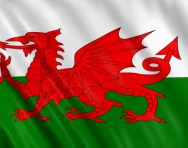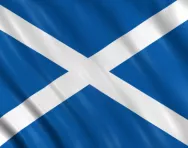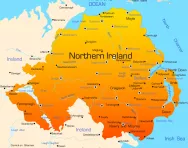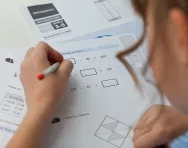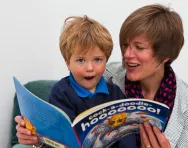Important update from TheSchoolRun
For the past 13 years, TheSchoolRun has been run by a small team of mums working from home, dedicated to providing quality educational resources to primary school parents. Unfortunately, rising supplier costs and falling revenue have made it impossible for us to continue operating, and we’ve had to make the difficult decision to close. The good news: We’ve arranged for another educational provider to take over many of our resources. These will be hosted on a new portal, where the content will be updated and expanded to support your child’s learning.
What this means for subscribers:
- Your subscription is still active, and for now, you can keep using the website as normal — just log in with your usual details to access all our articles and resources*.
- In a few months, all resources will move to the new portal. You’ll continue to have access there until your subscription ends. We’ll send you full details nearer the time.
- As a thank you for your support, we’ll also be sending you 16 primary school eBooks (worth £108.84) to download and keep.
A few changes to be aware of:
- The Learning Journey weekly email has ended, but your child’s plan will still be updated on your dashboard each Monday. Just log in to see the recommended worksheets.
- The 11+ weekly emails have now ended. We sent you all the remaining emails in the series at the end of March — please check your inbox (and spam folder) if you haven’t seen them. You can also follow the full programme here: 11+ Learning Journey.
If you have any questions, please contact us at [email protected]. Thank you for being part of our journey it’s been a privilege to support your family’s learning.
*If you need to reset your password, it will still work as usual. Please check your spam folder if the reset email doesn’t appear in your inbox.
Primary education in England, Wales, Scotland and N Ireland

If you've ever spoken to a friend or relative from a different part of the UK about their child's education, you might well have been left feeling somewhat confused.
Although the four countries follow a broadly similar structure, there are significant variations between the school systems, ranging from the age that children start school to the type of tests they take. Our at-a-glance guide will give you an overview of what school life involves for children in England, Wales, Scotland and Northern Ireland.

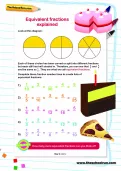
Boost Your Child's Learning Today!
- Start your child on a tailored learning programme
- Get weekly English & maths resources sent direct to your inbox
- Keep your child's learning on track
When do children start school?
- In England most children start primary school in the September before they turn five.
- In Wales children start Reception in the September before turning five.
- In Scotland children with birthdays between March and August start school in the August following their fifth birthday. Children with birthdays between September and February start school in the August before their fifth birthday (but this can be deferred until the following September).
- Northern Ireland has the lowest compulsory school starting age in Europe: children who have reached the age of four on July 1st start school the following September.
How are primary schools organised?
Throughout the UK, schools are organised into year groups, so children are taught with others of the same age (although in some schools – for example, very small ones, or those that admit more than 30 children in one year – year groups may be combined within the same class).
The table below shows approximate equivalents between primary school years in England, Wales, Northern Ireland and Scotland, but differences in school starting age mean there may be no precise correspondence.

| England | Wales | Scotland | N Ireland | |
| Age 4-5 | Reception | Reception | P1 | Year 1 |
| Age 5-6 | Year 1 | Year 1 | P2 | Year 2 |
| Age 6-7 | Year 2 | Year 2 | P3 | Year 3 |
| Age 7-8 | Year 3 | Year 3 | P4 | Year 4 |
| Age 8-9 | Year 4 | Year 4 | P5 | Year 5 |
| Age 9-10 | Year 5 | Year 5 | P6 | Year 6 |
| Age 10-11 | Year 6 | Year 6 | P7 | Year 7 |
In most areas, school years are then grouped together in larger stages or phases, usually with different curriculum requirements and outcomes for each.
In England:
- The Foundation Stage includes pre-school, nursery and Reception.
- Key Stage 1 covers Years 1 and 2.
- Key Stage 2 covers Years 3 to 6.
In Wales:
- In 2022, Phases and Key Stages will be replaced by a single continuum from ages 3 to 16 in each area of learning.
In Scotland, there are no phases or stages; the Curriculum for Excellence runs progressively from age three to 18.
In Northern Ireland:
- The Foundation Stage includes Years 1 and 2.
- Key Stage 1 covers Years 3 and 4.
- Key Stage 2 comprises Years 5 to 7.
What curriculum do primary school children follow?
Each country of the UK has its own curriculum, and although much of the content is similar, there are differences in the programmes of study.
In England, the National Curriculum applies to children in Key Stages 1 and 2. It includes English; maths; science; art and design; computing; design and technology; geography; history; music and physical education. Key Stage 2 children must also study a foreign language.
Schools in Wales follow the National Literacy and Numeracy Framework (NLF), which emphasises applying literacy and numeracy across the whole curriculum. The Curriculum for Wales identifies different areas of learning: personal and social development, wellbeing and cultural diversity; language, literacy and communication skills; mathematical development; Welsh language development (using Welsh as the first language in school, or learning it as a second language); knowledge and understanding of the world; physical development and creative development.
In Scotland, the Curriculum for Excellence includes expressive arts; health and wellbeing; languages; mathematics; religious and moral education; sciences; social studies and technologies.
The Northern Ireland Curriculum requires children in Key Stages 1 and 2 to study language and literacy; mathematics and numeracy; the arts; the world around us; personal development and mutual understanding; religious education and physical education.
How are children assessed?
Across the UK, children's learning and progress are continually assessed by their teachers. This is through activities such as classwork, homework, reading, spelling tests and maths tests. In some areas, there are also externally set assessments at specific points of a child's education.
In England, children have a baseline assessment in Reception to assess their ability on starting school (from September 2016), a phonics screening test at the end of Year 1, Key Stage 1 SATs in English and maths in Year 2, and Key Stage 2 SATs in English, spelling, punctuation and grammar in Year 6.
In Wales, children take National Reading and Numeracy Tests every year from Year 2 to Year 9.
In Scotland, general screening takes place in P1 to assess children's ability on starting school. Standardised assessments in literacy and numeracy, known as SNSAs, take place in P1, P4, P7 and S3. The SNSAs were introduced in 2017.
In Northern Ireland, children are assessed every year through teacher assessment and planned tasks and activities. Skills are often assessed using Levels of Progression (LoP) at the end of KS1, KS2 and KS3. Formal results, in the form of levels, are reported to parents at the end of Years 4 and 7.
Who's in charge of inspecting schools?
English schools are inspected by Ofsted. This typically happens once in every five years, but more often for schools where problems have been highlighted. Schools are rated Outstanding, Good, Requires Improvement or Inadequate.
In Wales, schools are inspected by Estyn at least every six years. They are graded from 1 (outstanding) to 5 (poor).
In Scotland, schools are monitored by Education Scotland. They choose a random sample of schools across the country to assess each year. Schools are not given a specific result or grade, but a letter explaining the strengths, weaknesses and targets.
Northern Irish schools are inspected by the Education and Training Inspectorate (ETI) on a risk-based schedule, so schools that are causing concern will be inspected more frequently. Schools can be rated as Outstanding, Very Good, Good, Satisfactory, Inadequate or Unsatisfactory.
What about school term dates?
Term dates vary not just from country to country in the UK, but also from area to area, so it's important to check the specific term and holiday dates for your school. However, on the whole:
- The English and Welsh school year begins at the start of September and ends in the third week of July.
- The Scottish school year begins in the third week of August and ends in mid to late June.
- The Northern Irish school year begins on September 1st and ends on July 1st.
Education in the UK: regional differences
For more information about education in the devolved countries, visit England's Department for Education website, Curriculum for Wales, Education Scotland and the Department of Education for Northern Ireland.
